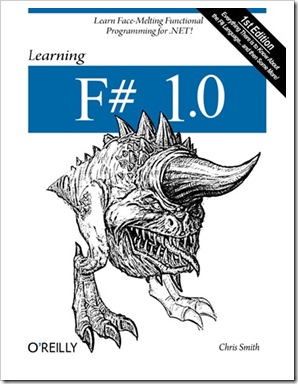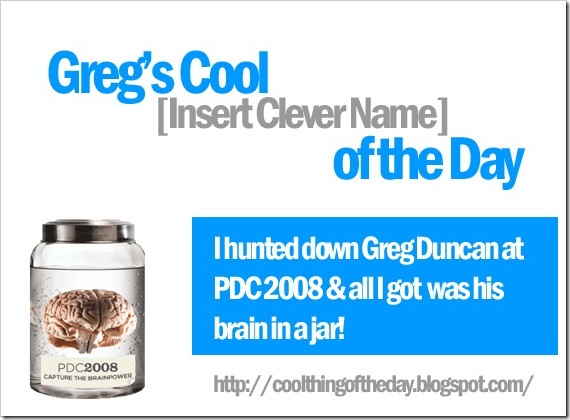The Spider King - The Devil’s Field Guide to the PDC
“If you are reading this, you know Microsoft’s Professional Developers Conference is on and is coming up in mere days. I am fortunate enough to be a part of the PDC Core Team; we are responsible for your experience at the event.
I am sure that you have been checking the site, the sessions, the feed and keeping your eye on the blogosphere for scoops and hints of what is to come. There is only one problem; they are not giving you everything you need so I want to provide insider advice on how you can make the most of your trip.
…
Standing in line is for suckers. I am amazed at how our species constantly finds itself mirroring farm animals like cattle, lined up in single file. Don’t stand in line for anything (except at bars, that is just a fact of life) at the PDC. …
…
Don’t wear your kilt at the event. Don’t be that guy. Wear it out to the after-parties. If you wear it at the event, you are just that guy.
…”
That last tip had me laughing out loud. This will be my fourth PDC (2001 “The HailStorm, .Net PDC”, 2003 “The Longhorn PDC”, 2005 “The WCF/WF/WPF/VS2005 PDC” and now the “Win7, VSTS2010, .Net 4 PDC” ) and I have to say he’s spot on with the tips. Don’t be that guy! LOL
Remember, pace yourself. It’s five days (Day 0 through 4, if you’re going to the Pre-con), don’t let you brain fill up on day one. Also realize that by day 4 you will have forgotten that tidbit you wanted to remember on day 1. Make notes. Send yourself emails, don’t even try to remember everything. Store pointers in your head, not the actual content…
And like he says, lines are for suckers. Just say no. Go early or go late… There’s so much to do and see that there’s no excuse to waste time standing in lines.
Also remember, most of the content/sessions will be available for offline/later viewing. So don’t stress if you can’t attend a session. You VERY likely be able to catch it when the video become available.
Above all, don’t stress out if “something” happens. Man, this is LA and it seems there’s ALWAYS something going on. 2001 was just weeks after 9/11. 2003 was the fires. 2005 we had a city wide blackout… 2008? It looks like it might be fires again. Just suck it up and drive on! There’s too much geekness to absorb to let all the external stuff get in the way… ;)
I’ll likely be posting before, during and after, but if I don’t say it later, if you see me (my picture is on the blog main page), say hi (you may even get a “Greg’s Cool Thing of the Day” PDC Badge! ;)
(via Girish Raja's Dynamic(s) Thoughts - Meet me at PDC 2008)













